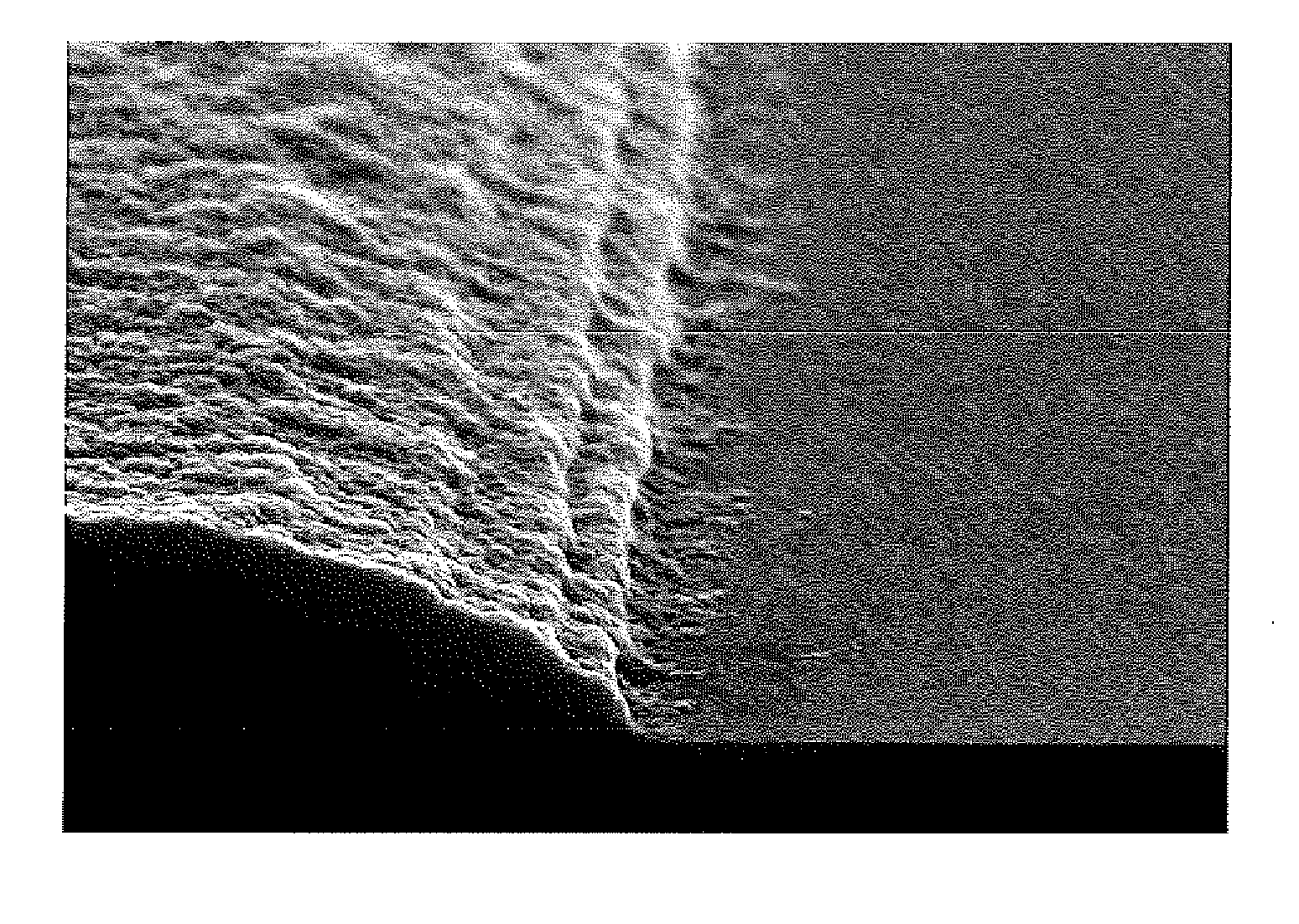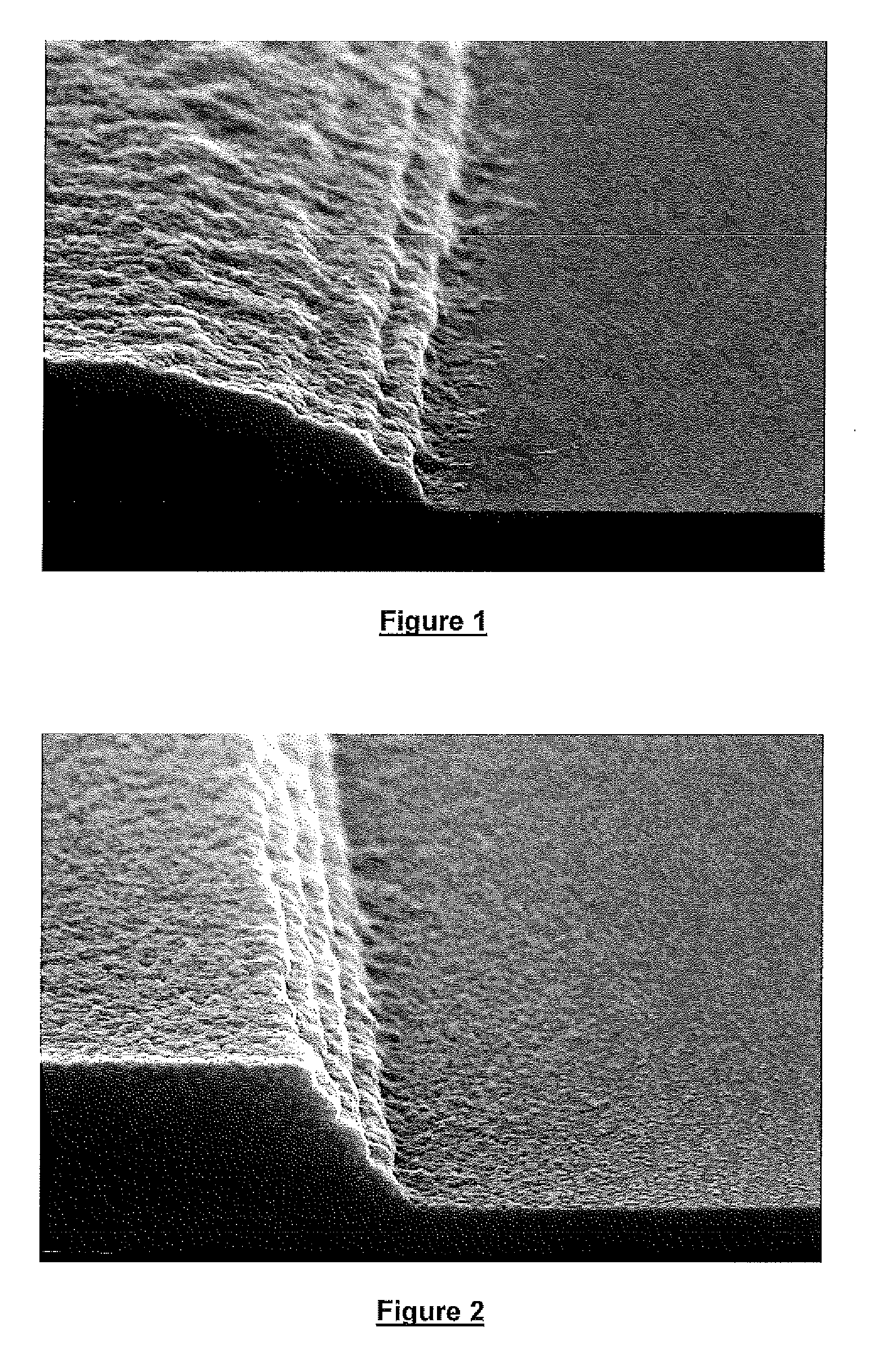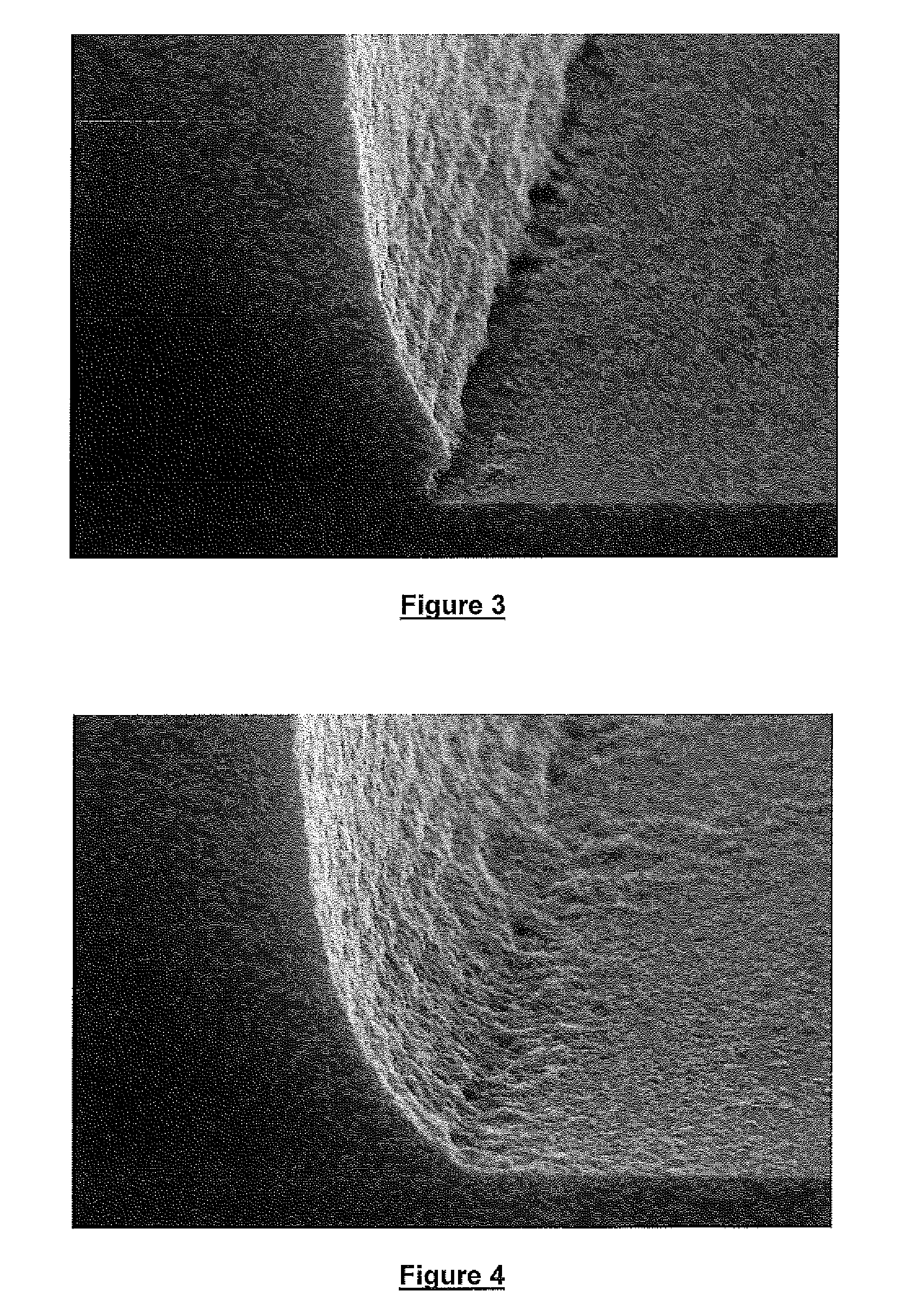Positive-type photosensitive siloxane composition
a technology of photosensitive siloxane and composition, which is applied in the direction of photomechanical equipment, instruments, coatings, etc., can solve the problems of increasing size, affecting the effect of heat resistance, and reducing the width of the wiring for lowering the resistance of the wiring, etc., and achieves good heat resistance, high sensitivity, and high resolution
- Summary
- Abstract
- Description
- Claims
- Application Information
AI Technical Summary
Benefits of technology
Problems solved by technology
Method used
Image
Examples
examples
[0127]Hereinafter, the present invention will be specifically described with reference to Examples and Comparative examples. However, it should be understood that the present invention is not restricted by these Examples and Comparative examples by no means.
synthesis examples
[0128]First, Synthesis examples of polysiloxane concerning the present invention will be shown below. In addition, following instruments are utilized for measuring.
GPC: HLC-8220GPC manufactured by TOSOH CORPORATION
Spin coater: MS-A100 manufactured by MIKASA CO, LTD
synthesis example 1
Synthesis of Polysiloxane Ia-1
Synthesis with an Alkali Catalyst
[0129]To a 2-litre flask equipped with a mixer, a thermometer, and a condenser, 36.5 g of 25 wt-% tetramethylammonium hydroxide (TMAH) aqueous solution, 800 ml of isopropyl alcohol (IPA), and 2.0 g of water were charged. Apart from this, a mixture solution of 39.7 g of phenyltrimethoxysilane, 34.1 g of methyltrimethoxysilane, and 7.6 g of tetramethoxysilane were prepared in a dropping funnel. This mixture solution was added dropwise into the aforementioned flask at 10° C. and then mixed for 3 hours at this temperature. The resulting solution was neutralized by adding 10% KCl aqueous solution. To the neutralized solution, 400 ml of toluene and 100 ml of water were added to separate the mixture solution into two layers. The thus obtained organic layer was concentrated under the reduced pressure to remove solvent and then propylene glycol monomenthyl ether acetate (PGMEA) was added to the concentrate so that the solid conce...
PUM
| Property | Measurement | Unit |
|---|---|---|
| thickness | aaaaa | aaaaa |
| temperature | aaaaa | aaaaa |
| temperature | aaaaa | aaaaa |
Abstract
Description
Claims
Application Information
 Login to View More
Login to View More - R&D
- Intellectual Property
- Life Sciences
- Materials
- Tech Scout
- Unparalleled Data Quality
- Higher Quality Content
- 60% Fewer Hallucinations
Browse by: Latest US Patents, China's latest patents, Technical Efficacy Thesaurus, Application Domain, Technology Topic, Popular Technical Reports.
© 2025 PatSnap. All rights reserved.Legal|Privacy policy|Modern Slavery Act Transparency Statement|Sitemap|About US| Contact US: help@patsnap.com



